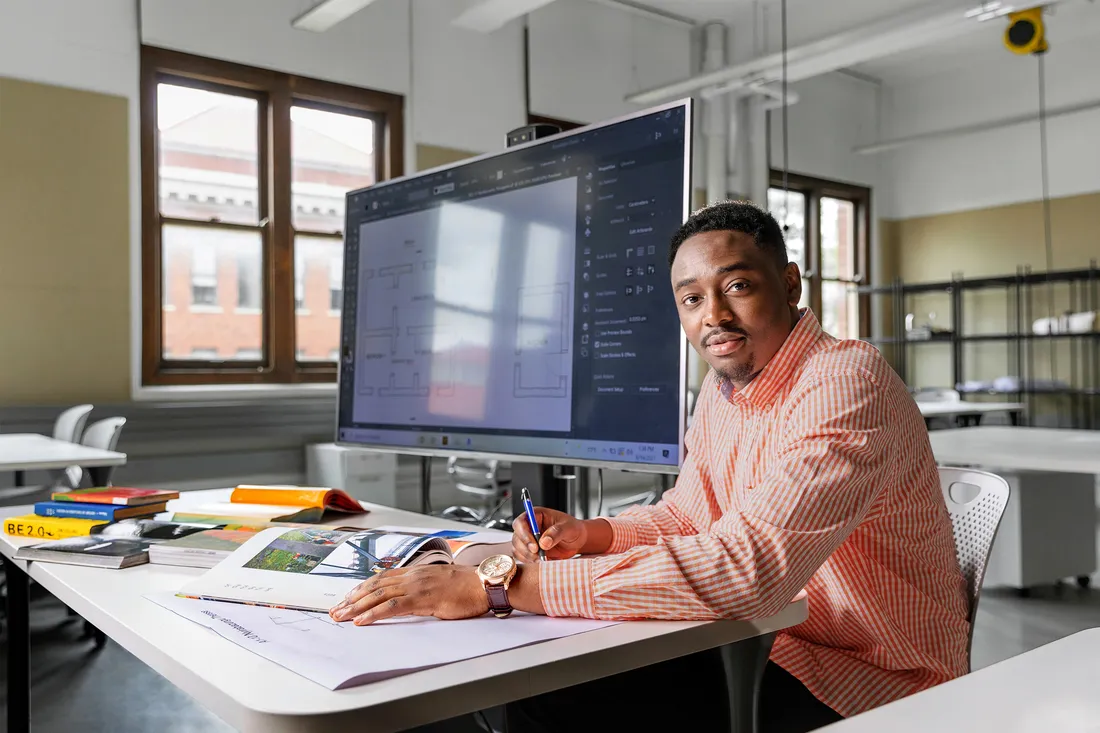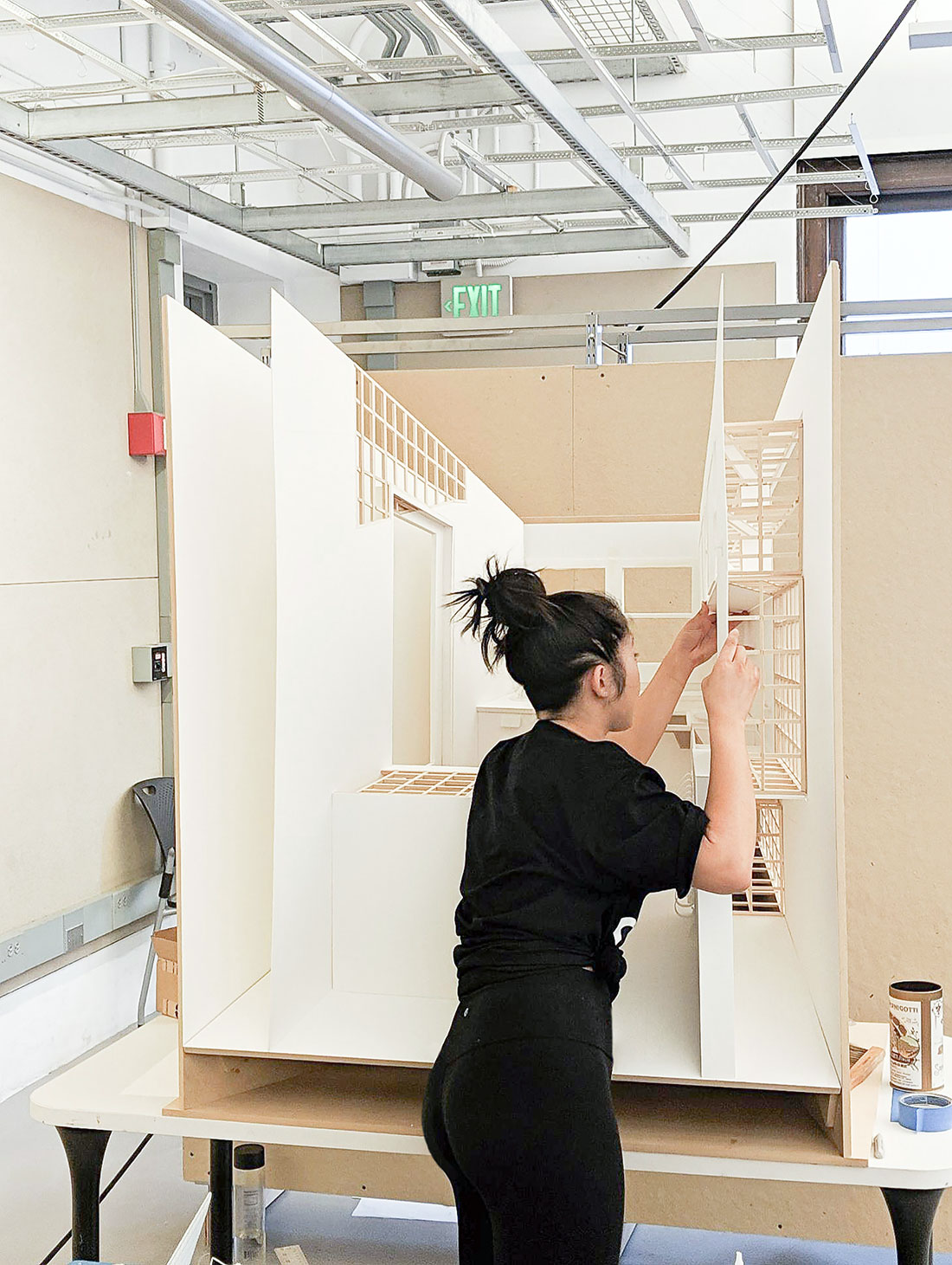Success by Design
An architecture major uses an internship with Syracuse University’s photo team to flex his creative muscles.
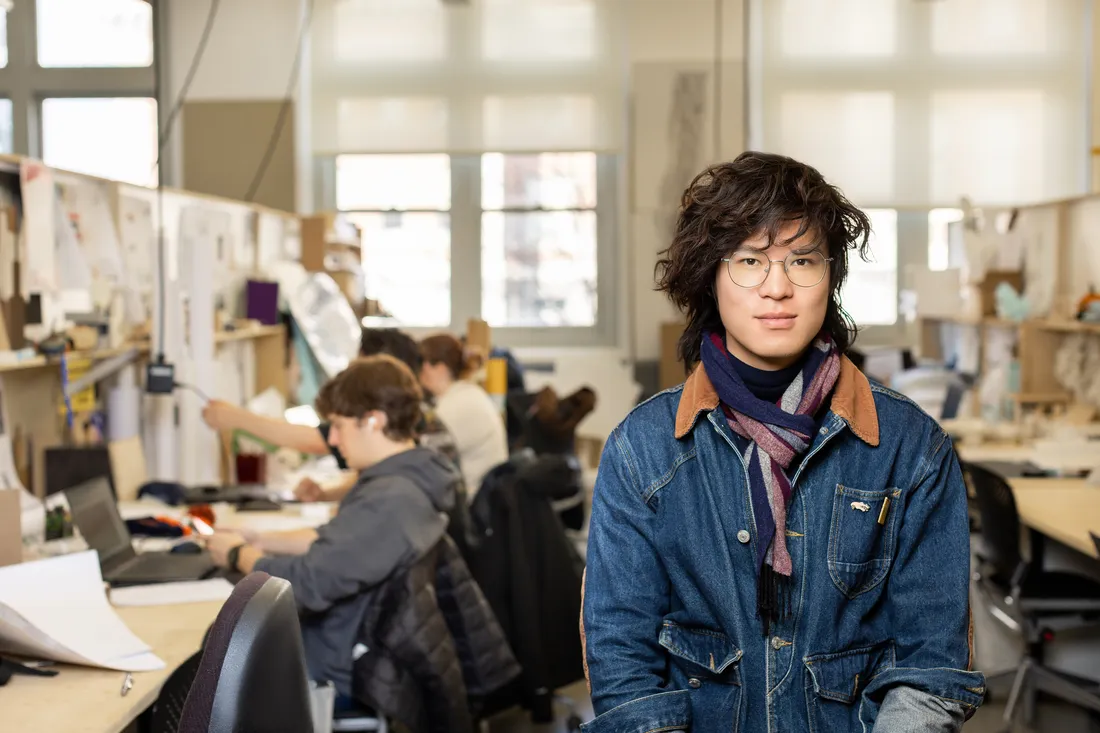
“It’s the journey, not the destination, that I’m interested in,” says architecture student Qianzhen Li ’25.
Qianzhen Li ’25 knows some things are meant to be. Like choosing a college. Growing up in the Chinese seaport of Shanghai, he never imagined living in the United States, much less attending a top-tier research institution.
That all changed a few years ago when, at his mother’s urging, he moved to Wisconsin. “I kept hearing about Syracuse University, which was 13 hours away,” recalls Li, a member of the top-ranked School of Architecture. “I applied, got accepted and never looked back.”
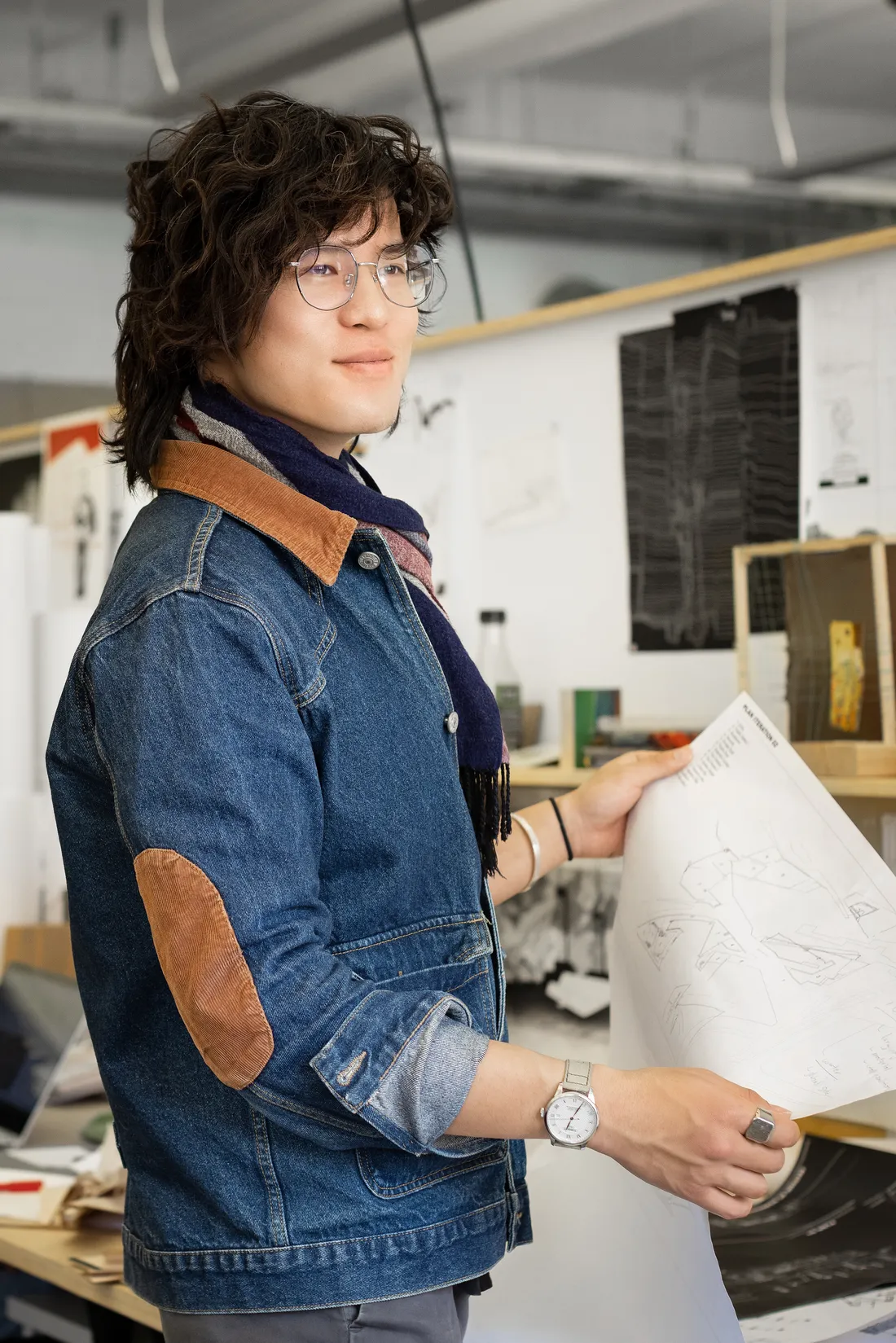
Li is helping Syracuse’s photo team design a satellite studio in Ernie Davis Hall, where he also is a resident advisor.
Architecture grew out of Li’s flair for painting and photography, both of which he took up in high school. And Syracuse’s architecture program seemed like the next logical step in his creative evolution.
The five-year program does more than blend liberal arts training with professional studies. It lets students like Li put theory into practice, flex their creative muscles. “Whereas art deals with experience, architecture is about function. It’s more pragmatic,” he says.
After three years of sequentially organized coursework, Li is now in the so-called core of the degree program—an intensive, two-year studio experience. Much of his time is devoted to self-directed research and coursework in a dedicated workspace in Slocum Hall.
If all goes as planned, he’ll complete a major design research project and then graduate. Licensure is another few years of work, education and state exams.
“I know it sounds trite, but graduation is just the beginning,” says Li, who recently designed the International Criminal Court building for one of his classes. “It’s the journey, not the destination, that I’m interested in.”
Leading the Eye
For all his architectural acuity, Li is a photographer at heart. Take his ongoing internship with the award-winning photo team in Syracuse’s Division of Marketing and Communications. Two years on, he still can’t believe that he was hired with only six months of photographic experience.
“Li is a natural,” states Ross Knight, the University’s executive director of photography. “Because of his genuine desire to learn and improve his craft, he’s fun to work with.”
Li credits the team for showing him how to “lead the eye” with composition, shape and lighting—also an important architectural design skill. “It’s amazing how much you can say with a single image,” says Li, who enjoys all forms of portrait photography.
He traces his internship to a “Buckets and Photos” event during his first year. Led by architecture dean Michael Speaks, Li and a dozen other students donned bucket hats and traipsed through downtown Syracuse, photographing outdoor art and architecture.
Not owning a regular camera, Li snapped pictures with his cell phone. One of them captured an award—and the attention of a fellow photographer, who put him in touch with Knight.
“When Ross hired me, I could barely operate a DSLR [digital single-lens reflex] camera,” says Li of the industry workhorse. “Since then, he and his team have taken me under their wing and taught me a lot, especially about different cameras and interchangeable lenses.”
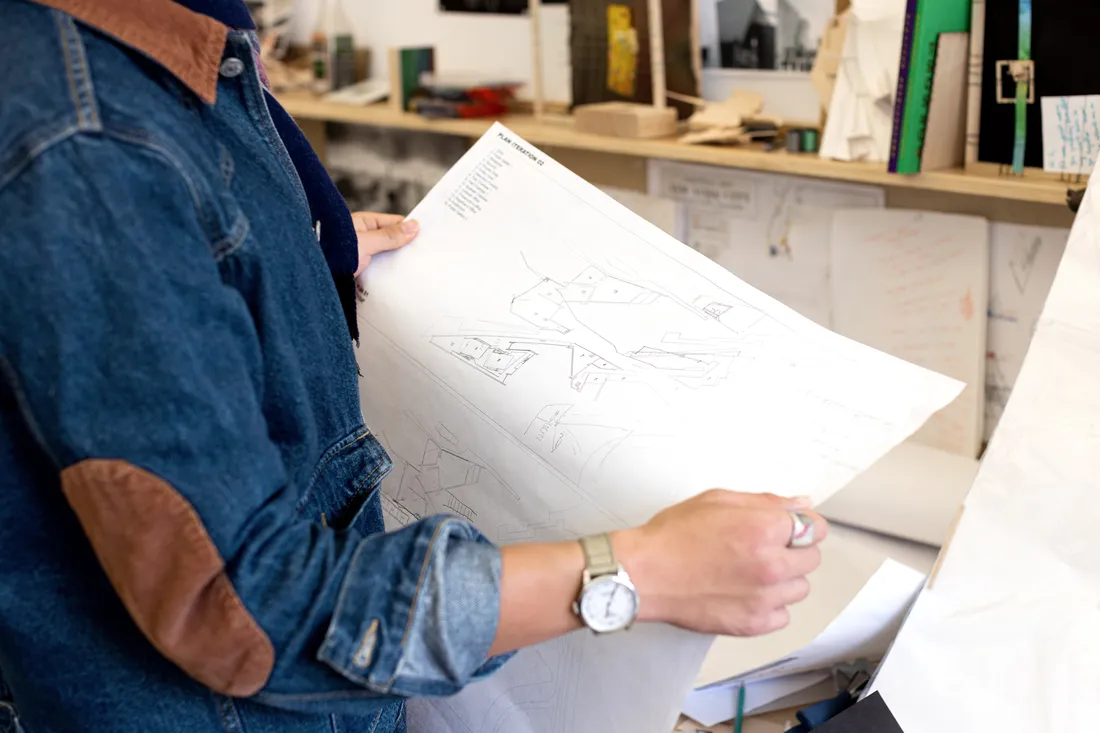
Li spends much of his time in Slocum Hall doing self-directed research and coursework.
Probing Ideas and Form
Li praises the University for helping him unlock his potential, noting that creative self-expression engenders a sense of agency.
Following a recent internship in Shanghai, Li came to the realization that there’s more to architecture than designing buildings. Urban planning, interior design, landscape design and teaching are some other things you can do with an architecture degree, he explains.
Associate Professor Elizabeth Kamell recently introduced him to philosophies of urban architecture, which examine the built environment in aesthetic, spatial, social and political terms.
I knew when I came here that I’d be working with excellent professors and learning alongside smart, talented students
Qianzhen Li ’25
Hence, Li’s nightstand is filled with dog-eared books by philosophers with names like Michel Foucault and Bruno Latour. “I’m interested in how and why societies change,” he says. “[Foucault’s and Latour’s] impact on contemporary architecture and urban design—and the public realm, in general—can’t be overstated.”
Kamell calls Li an “inventive thinker and a risk-taker,” someone who doesn’t wait for inspiration to strike. “He seeks to imagine, through iteration, a formal language that conceptually grounds his work,” says the former director of the University’s Community Design Center.
That Li can easily switch between modes of representation (e.g., hand-built models, freehand drawing, montage and digital environments) enables him to realize ideas and form, she adds. “He understands architecture’s literal and metaphorical dimensions.”
Never a Straight Path
Innovation and versatility are evident in other areas of Li’s life. He’s currently helping the University’s photo team (based in the Nancy Cantor Warehouse in downtown Syracuse) design a satellite studio in Ernie Davis Hall. “I’m mocking up some plans—work that’s related to my major,” says Li, who also is one of the hall’s resident advisors.
In his spare time, Li can be found rock climbing or sampling local restaurants. He also presides over the campus chapter of the German Cultural Society, an activity prompted by a high school exchange experience in Bavaria.
Li is convinced that what drew him to Syracuse and what has impelled him to stay are slightly different. “I knew when I came here that I’d be working with excellent professors and learning alongside smart, talented students,” he says, adding that the 150-year-old School of Architecture is one of the nation’s oldest. “What I didn’t anticipate was the family-like atmosphere. The class sizes are small, the instruction is individualized, and everyone supports everyone else.”
Just as some things are meant to be, other things, like the creative process, are often infused with the beauty of imperfection. Never a straight path.
“Life is weird that way, a crazy adventure with lots of obstacles and detours,” Li surmises. “But that’s where I hang out. It’s where true learning takes place.”

